How to fold a leaf?
 Oct 30, 2015 • 11:30 PM UTC
Oct 30, 2015 • 11:30 PM UTC United States
United States 140x Magnification
140x Magnification Microorganisms
Microorganisms
Manu Prakash
I am a faculty at Stanford and run the Prakash Lab at Department of Bioengineering at Stanford University. Foldscope community is at the heart of our Frugal Science movement - and I can not tell you how proud I am of this community and grassroots movement. Find our work here: http://prakashlab.stanford.edu
266posts
1192comments
42locations
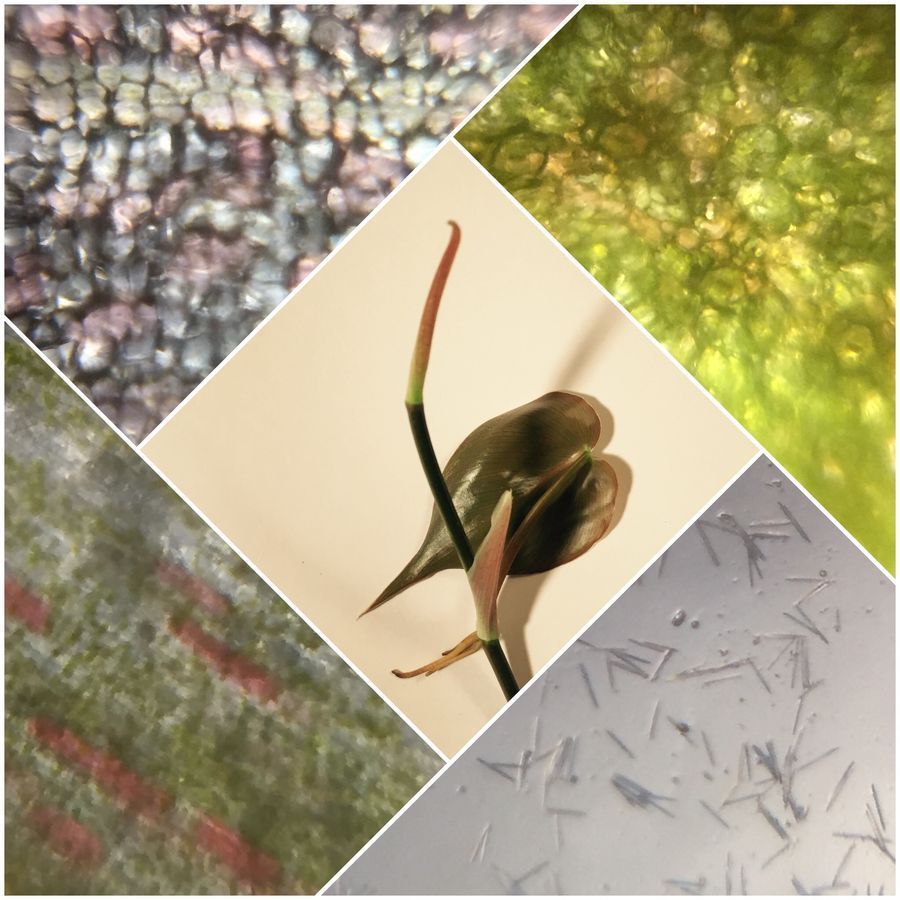
Origami is not just an art or engineering discipline. Deep ideas from a Origami also apply to biology. Starting with development of any organism. In fact, if I said that all the diversity of multicellular animal life is just different folds of the same substrate – I won’t be totally off.
To understand the depth of this idea (which is not apparent); you have to think about how an organism developed or how any new tissue takes the form it does. How does a lung grow or how does a new leaf grow? Since lungs are often less accessible as compared to leaves; I decided to test this idea by looking at baby leaf (growing at the tip of a plant) to see what’s inside.
I choose a plant that I knew from my childhood – it’s called a “money plant” in my country (India); but I think it belongs to the Epipremnum genus.
https://en.m.wikipedia.org/wiki/Epipremnum_aureum
So, I took a simple growing branch of this plant and took a closer look at the growing leaf at the buds.
To understand the depth of this idea (which is not apparent); you have to think about how an organism developed or how any new tissue takes the form it does. How does a lung grow or how does a new leaf grow? Since lungs are often less accessible as compared to leaves; I decided to test this idea by looking at baby leaf (growing at the tip of a plant) to see what’s inside.
I choose a plant that I knew from my childhood – it’s called a “money plant” in my country (India); but I think it belongs to the Epipremnum genus.
https://en.m.wikipedia.org/wiki/Epipremnum_aureum
So, I took a simple growing branch of this plant and took a closer look at the growing leaf at the buds.

The green is a slightly mature leaf; while the red top looks like a growing leaf. So it was time to explore this growing bud under a foldscope.
Methods: to explore this 3D structure; I knew I had to cut the leaf. I took a used razor blade (warning: always use blades with extreme care), and cut a thin slice of the growing bud. To make a simple thin slice; I often stack two blades (most use and throw razors come with twin blade anyway); and stuck them to each other with a double sided tape. That gives me two blades with a known distance. This technique was taught to me by another Foldscope user – @Laks. So I made a thin slice and was ready to image.
To my wonder; I saw a growin spiral shape of the leaf under the microscope. That was a joyful moment – because the pattern is quiet beautiful.
Methods: to explore this 3D structure; I knew I had to cut the leaf. I took a used razor blade (warning: always use blades with extreme care), and cut a thin slice of the growing bud. To make a simple thin slice; I often stack two blades (most use and throw razors come with twin blade anyway); and stuck them to each other with a double sided tape. That gives me two blades with a known distance. This technique was taught to me by another Foldscope user – @Laks. So I made a thin slice and was ready to image.
To my wonder; I saw a growin spiral shape of the leaf under the microscope. That was a joyful moment – because the pattern is quiet beautiful.
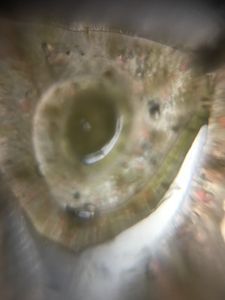
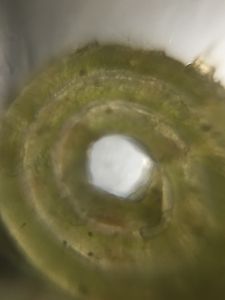
Closer to the tip of the bud; it formed a tighter but triangular spiral; while further down it was round. So the leaf is just rolled in like a “burrito” – isn’t that cool. So as it grows; somehow the burrito grows. But when the leaf matures; nobody can actually tell that it was rolled up so tightly. No marks, no left crease. Incredible.
I also looked at other cellular structures of the plant – specially curious about where the red color comes from. I could see speckles everywhere; and found individual cells with red pigment
I also looked at other cellular structures of the plant – specially curious about where the red color comes from. I could see speckles everywhere; and found individual cells with red pigment
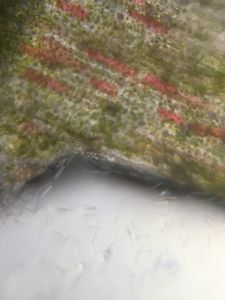

But wait a second; what are those cryatalline structures?? I have no idea. I have never seen them in any plant samples I have looked at. Is that starch? I don’t know – please help.
Here is another image of the crystalline structures. This is the second time, long crystals have stumped me. And yes, I did not cough on this sample ( https://microcosmos.foldscope.com/?p=8369 )
Here is another image of the crystalline structures. This is the second time, long crystals have stumped me. And yes, I did not cough on this sample ( https://microcosmos.foldscope.com/?p=8369 )

Finally; here is a montage of some of the images of the same plant.
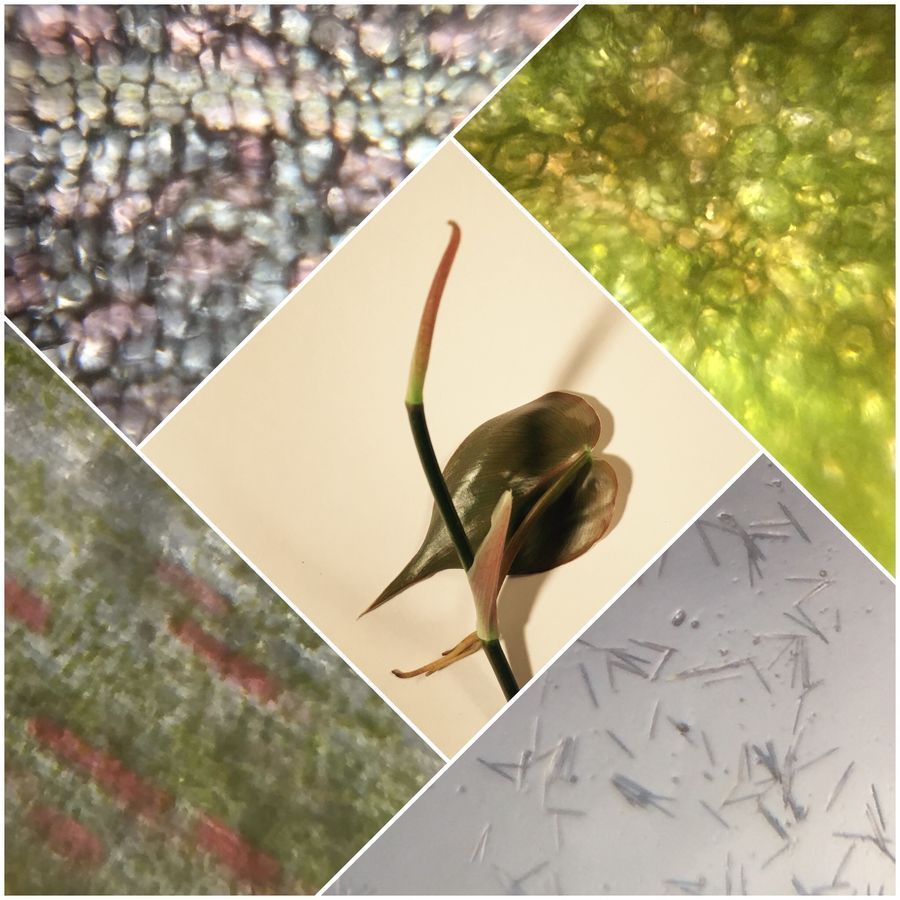
Cheers
Manu
@laks: although not pollen; please add this to your plant database.
Manu
@laks: although not pollen; please add this to your plant database.
Sign in to commentNobody has commented yet... Share your thoughts with the author and start the discussion!

 0 Applause
0 Applause 0 Comments
0 Comments
















